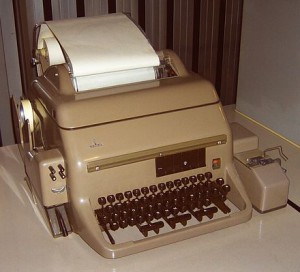In preparation of the Dornbirn PM Camp on November, 20th and 21st, we installed a blog parade on #breaking with patterns: here is my second article on this topic:

So far, it looked to me like I was a #de-cruster. Perhaps I am also a #pattern breaker. After all, I no longer go places by car, using the bike instead. And, especially in winter, this is unbelievable for many of the persons I meet.
And whenever I do not have enough coat hangers, I throw away some of my clothes, instead of buying new coat hangers. Those and many more are the kinds of things I do.
But then, perhaps I am not breaking patterns at all, instead being trendy like everybody else? For instance when it comes to using the telephone. Because I have now come to that stage where I have completely reduced calling people. In fact, I find it impolite to inconvenience other people by calling them. And, of course, it is also because I, myself do not wish to be interrupted all the time by receiving a call.
Here is my personal “telephone history“:
I used to be a true “multi telephone person”. When InterFace connection was still very young, I spent a lot of my time with customers. Consequently, I always spent an hour in the middle of the day calling the company. And since I never use a customer’s telephone for my own purposes, I always had to go downstairs and use the public phone booth.
In those days, I also discovered the C network. However, it was expensive, you needed an extensive installation process and the network itself was as limited in its availability as its quality was poor. Besides, I always wanted to be able to totally focus on the person at the other end when having a telephone conversation. Consequently, I never used a car telephone; later, too, calling someone from the car was only the absolute ”ultima ratio“.
In the times of public phone booths, I always had a sack of change on me. Later, I always had a number of telephone cards in my briefcase. And, as soon as the D network came, I immediately had a cell phone. My fees were extremely high.
Now, I find it harder and harder to come up with good reasons and situations where I absolutely have to use a telephone. For instance after having made an appointment with someone to meet at the central train station and already having found a nice place to sit for me and my travelling companion. Then I will call him. But only if he has no Whats up, BBM or other messenger. When all is said and done, the only time when you actually need it is for the emergency call – when the murderer approaches.…
Consequently, I no longer call people. Because if there is something really important I wish to discuss with someone, then I want to do it in a leisurely fashion. Once in a while, I also want to have five minutes to prepare for a conversation. I want to see his face. If this is even possible across continents, then why should I not make use of the opportunity.
Consequently, I make an appointment with my business partner. As soon as possible and preferably through social media. If no other way is possible, then with an email dialogue. Then I will enter “video conference” in my calendar and all will – at least if it is a hangout – be initiated automatically. If the person at the opposite end does not like google, I take Skype (Microsoft) or FaceTime (Apple). If my partner likes neither Microsoft nor Apple (which is something I can easily identify with), then there are enough other alternatives.
The entire conversation will also be much pleasanter. I comfortably sit on my sofa, my chrome book is lying on my lap and my conversation partner’s friendly and smiling face can be seen on my screen. I need no headphones (and also need not press a telephone against my ear), can simultaneously formulate something with him on shared documents (perhaps for resulting notes – also called minutes), we can look at and process tables together and we can look for and show each other an image, and much more.
🙂 No – teletype machines, fax machines, telephones – those are devices we no longer need…
Doesn’t this also have something to do with “breaking with patterns”?
RMD
(Translated by EG)
P.S.
The pictures shows a teletype machine by Siemens. It is a model T100, the table version. As far as I know there was also the model T100o – but that was it.
This mechanical teletype machine had a modular structure, which means it could be added to. On the left side, you see a tape perforator for generating perforated tape. Underneath, the transparent container for the cut-out material. On the right, you can see the optional perforated tape reader, which made it possible to send pre-written messages with maximum speed. On the basic device, you can see a red note about the update to 75 Baud above the active-hours counter.
After a certain running time, the teletype machines used and rented by the Deutsche Bundespost were completely disassembled at the FZZA Elmshorn and then newly reassembled. The blank key has the switch between letters and digits on the left and right sides, which is necessary because of the Baudot-Code with only five Bit (CCITT5). The paper is an endless roll, perhaps a self-copying paper with a copy since there is a slightly crooked grey intermediate layer.
Source: Wikipedia – you can find the image under the GNU licence for free documentation ,Version 1.2 or a later version. Published by the Free Software Foundation,

